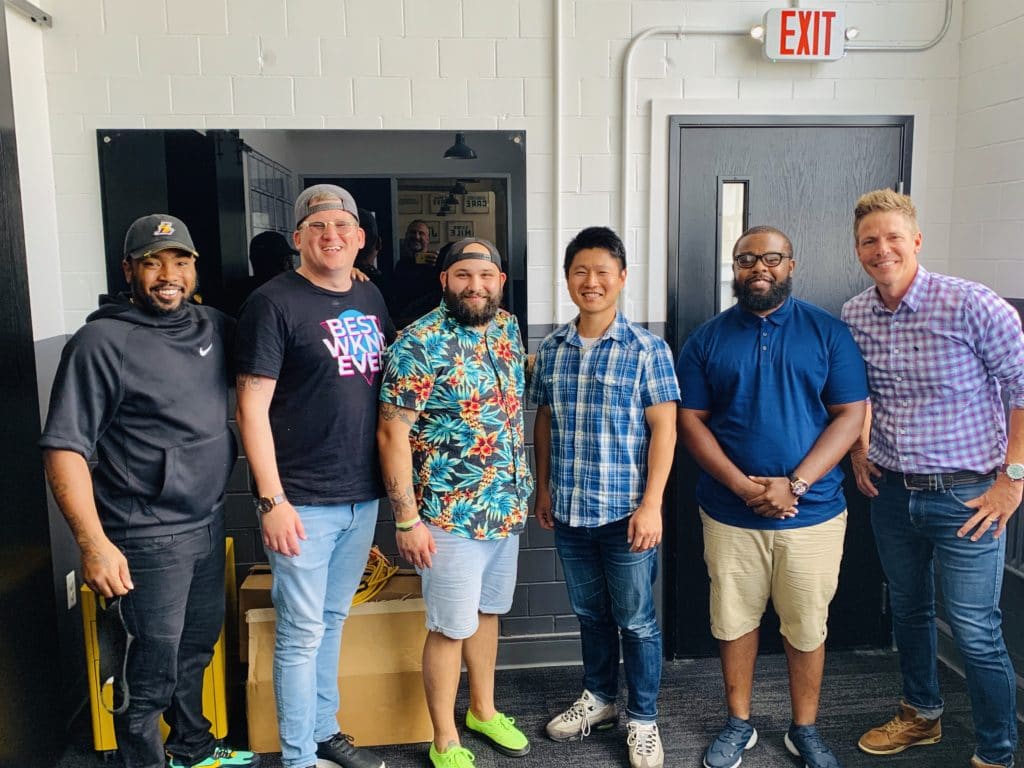Article
Resources for Residencies
As you look to resource your residency, three key components ought to be included to produce health.

The dictionary definition of the noun “resource” is “a stock or supply of money, materials, staff and other assets that can be drawn on by a person or organization in order to function effectively.” The word also can be used as a verb with the action of “providing” those things listed above.
God is our primary resource – both in assets to be drawn on and in the action of providing! The earth is the Lord’s and everything in it (Ps. 24:1). He owns the cattle on a thousand hills (Ps. 50:10).
This is not up for debate. Broadly speaking, the challenge for the church is not from a lack of resources. It’s about application that begins with how we view the harvest.
Resources in the Harvest
A church planting mentor in my life was Charles Chaney, who had served in my home state of Illinois and nationally through the Home Mission Board (now NAMB). There was a song with the line, “I was country before it was cool.” Well, Charles was all about church planting before it was cool! He insightfully wrote “In fact one of the laws of the harvest (to which the church’s task is likened) says the resources are in the harvest. Where the church planter is sent to labor, the resources will be found for the congregation’s future.” This law of the harvest has rung true for me over the years.
If we believe this truth, then every future church-planting resident or planting-team member is in the harvest. Every single benefactor to help support your church’s residency is in the harvest. Every prayer supporter and residency leader are in the harvest. These untapped resources are often overlooked. How would you rate your church’s harvest mentality? By faith, how will you ensure a church planting residency adequately resourced from the harvest?
Resources Within You
We at Send Network provide a Residency Builder event aimed at helping a pastor walk away with a framework for raising up a pipeline of leaders. It’s a framework that reflects Christ as trainer, their personal development and their church’s unique DNA, while we provide them a full ecosystem of equipping resource options.
In this workshop, one of the exercises underscores how God has already given you as pastor what you need to build out your church’s residency. What we mean by that can be broken down into four quadrants: starting with people who have invested in you, influential books that you’ve read, life experiences and your responsibilities. These are all God-given resources to uniquely shape your residency.
This exercise can become a real “aha moment” because these books can become the beginnings of a residency syllabus. The way people spoke into your life and coached you can shape how you do that for a resident. The list of your life experiences would help create a list of benchmark experiences for your residents. Examples could be a short-term mission trip, leading someone to Christ, starting a small group, preaching, etc.
Resources in Your Networks
My tribe has a robust Send Network planter assessment, orientation, training, care and coaching ecosystem in place. Most church-planting support organizations will have a plethora of resources in terms of materials and curriculum. To reiterate, the challenge is not from a lack of resources. Whatever your tribe, be sure to ask your church planting leaders how they can assist because, believe me, that’s music to their ears. As you look to resource your residency, there are three key components that ought to be included to produce health. What are the points of resource for you to address?
The ‘3 Ds’ of Resources
These are rooted in the “three Ds” – the elements of Discovery, Development and Deployment. They are the flow of a residency and encapsulate the discovery of people, the development of a plan and the deployment to places. These elements are the points of resource for your residency and can guide you as a leader to build out the necessary resources from your harvest, your planting network and from within yourself.
1. A great discovery process
The first stage of residency is leading yourself and the second is leading others. Where are the residents and how do they enter this pre-residency stage? It begins with basic discipleship and equipping people with foundational practices for living on mission with God. This ought to include things like spiritual formation, Bible fluency, evangelism, understanding the church, servant leadership and others you deem vital. Likewise, leadership involves learning how to be a team, how to make disciples, understand mission context, healthy communication skills and the like. If you resource to these first two stages, you’ll have a full funnel of prospective residents.
2. A great development process
The next-step plan in this third stage is to move to the level of leaders who can lead other leaders. What are the needed skills and competencies to be a multiplying leader? Determine these and you’ll know what training to provide toward your assessment. This is the testing ground for future church-planting residents. Find ways to give opportunities and resource them to experiences and coaching. In church planting, the next step is either a rigorous planter assessment and/or entering a residency to help in the assembling of a launch team with a plan to plant. This is the fourth stage of a residency: leading a group.
3. A great deployment process
Every church is a multiplying church in the making and that means sending them out with support on every level, which is the fifth stage of residency. They are deployed to a place, commissioned with a celebration and solid support. How do you plan to resource people to be sent? Jesus said, “As the Father has sent Me, so have I sent you” (John 20:21). Indeed, the Lord has set the bar high for resourcing and sending!




